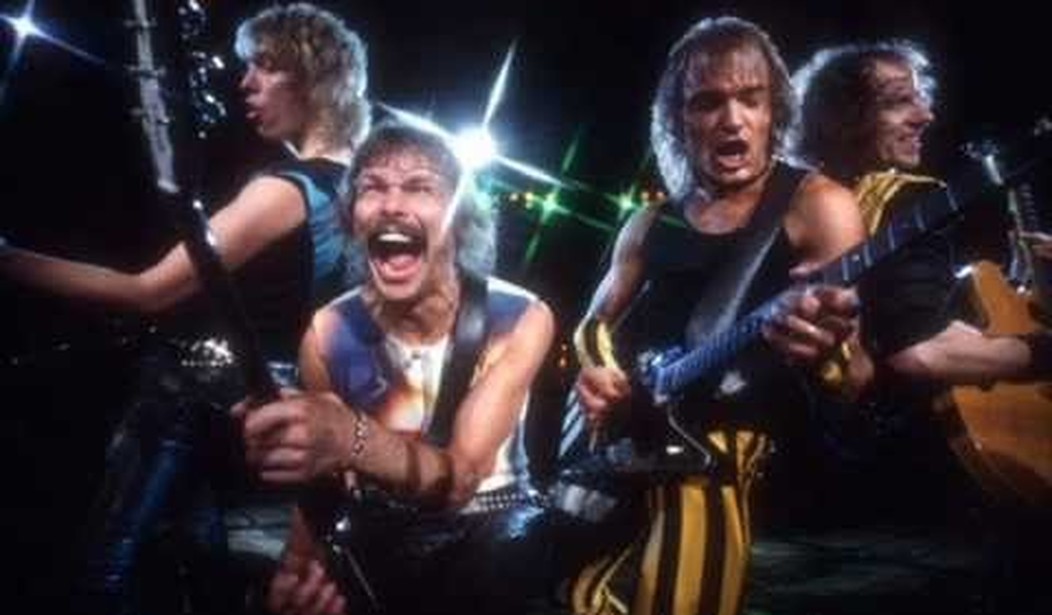Only three years separate the release dates of two milestone rock hits to be examined here, but the interim represented a quantum leap in the history of hard rock and heavy metal.
As we reach the thirtieth anniversary of Nirvana’s first album Bleach (1989) and the advent of Seattle-based grunge rock, a look back at the transitional moment between flashy late-eighties metal and the grungy nineties reveals the profound change that occurred as the new millennium approached.
Twenty years after Black Sabbath ushered in the epoch of heavy metal (1969), the genre was gestating two transformations. The last great evolution had occurred in the early eighties with the so-called New Wave of British heavy metal. Iron Maiden’s epic musical onslaughts and the layered melodic rock of Def Leppard led this second English incursion to America’s shores. America answered back with breakthrough glam and Spandex masters Motley Crue.
By 1988 however, the bloom had fallen off the rose. While the epics stayed epic, two beasts were roaring from the bowels of anonymity: Metallica, along with fellow Big Three bands Anthrax, Slayer, and Nirvana set forth out of the Emerald City to propagate a sub-genre designation—grunge—that guitarist and songwriter Kurt Cobain never liked.
Much as punk rock served notice on the late seventies phenomenon Rolling Stone Magazine called “corporate rock” (Kansas, Styx, Journey, among others), the heavyweight Big Three and grunge rock’s Big Four (Nirvana, Pearl Jam, Alice in Chains, and Soundgarden) rose up and threatened to put the kibosh on a hard rock and metal form that had become over-produced, numbingly derivative, and too self-satisfied for its own good.
A perfect example of a final fond farewell to the old guard is captured in the Scorpions’ hit “Rhythm of Love,” from 1988’s Savage Amusement, which peaked at #5 on Billboard’s Hot 200. The “ROL” single rose to #6 on Billboard’s Hot Mainstream Rock Tracks.
This gorgeous paean to the rock circuit’s movable erotic feast has it all: a big sci-fi storyboard, flash-pots and flame, magnanimously-layered power chords, and millionaire musicians having the times of their lives. It is clear, in retrospect, that Cobain, Pearl Jam’s Eddie Vedder, or late Alice in Chains frontman Layne Staley would never have uttered the following on-the-nose lyric:
The rhythm of love, keeps me dancing on the road,
The rhythm of love, got the groove that fits the bone.
Here, in all the ebbing glory of eighties metal, “Rhythm of Love”
“ROL” was ear candy for the heavily-inclined, but the party was soon over. Bleach had put Nirvana on the map, but it was 1991’s Nevermind that launched the group and its troubled visionary from Aberdeen, Wash., into rock’s stratosphere.
The chart-topping “Smells Like Teen Spirit,” (#1 on Billboard’s Alternative Songs and #5 on Cashbox’s Top 100 Pop Singles) is regarded as the signature song from Nirvana’s breakthrough, justifiably so. It is a song about beginnings, the arrival of grunge, and a new order of stripped-down, unpretentious rock-and-roll.
If “Spirit” heralds arrival, “In Bloom” is all about endings. Cobain’s sardonic vocal, earnest degeneracy, and brilliant, rudimentary lead guitar break perfectly captured the angst of a young generation raised on rock and yet left behind by rock’s excess, and proclaimed with harsh irony that the old kings, while revered, were dead.
Hail the new kings. The layered crunch of the chording on the song’s chorus is the only recognizable tie to the Scorpion’s hit of three years before. Every other aspect of “Bloom” is a loving but final rejection of the epic-and party-metal era that came before. The accompanying, award-winning video for the songs furthers this sense of endings, signaling a wrap on rock’s abiding ethos from Chuck Berry, through Ed Sullivan and the first British Invasion, right up to the last gasps of classic eighties metal.
Regarded as one of the most evocative rock videos of all time (Best Alternative Video at the 1993 MTV Video Music Awards), here’s “In Bloom”:
Viewed through this prism, things had taken a dark turn. Absent from this pop music transformation were Iron Maiden’s aural reenactments of world war and dramatized Satanic passion plays. Gone was the “have a good time, all the time” mantra of bands like Poison. A generation beset by rampant divorce, school shootings, pandemic alienation, and instruction in moral relativism by the progressive 1960’s boomers was making itself heard.
It is impossible to imaging Scorpion’s lead singer Klaus Meine singing the following lyric from “In Bloom”:
He’s the one, who likes all our pretty songs,
And he likes to sing along, and he likes to shoot his gun,
But he don’t know what it means.
There are other pairings that demonstrate the late-eighties/early nineties passing of the torch from rock’s stylistic old guard, like Poison’s “Nothin’ But A Good Time” (1988) alongside Filter’s “Hey Man ,Nice Shot” (1995), and Queensrÿche’s “Empire” (1990) compared to Tool’s “Sober” (1993).
But you’d be hard-pressed to find two songs that provide a better representational contrast than “Rhythm of Love” and “In Bloom.”
The former is an irony-free, face-value celebration of everything rock music stood for as the turn of the millennium approached. The latter is an inspired and complete deconstruction of same.









Join the conversation as a VIP Member